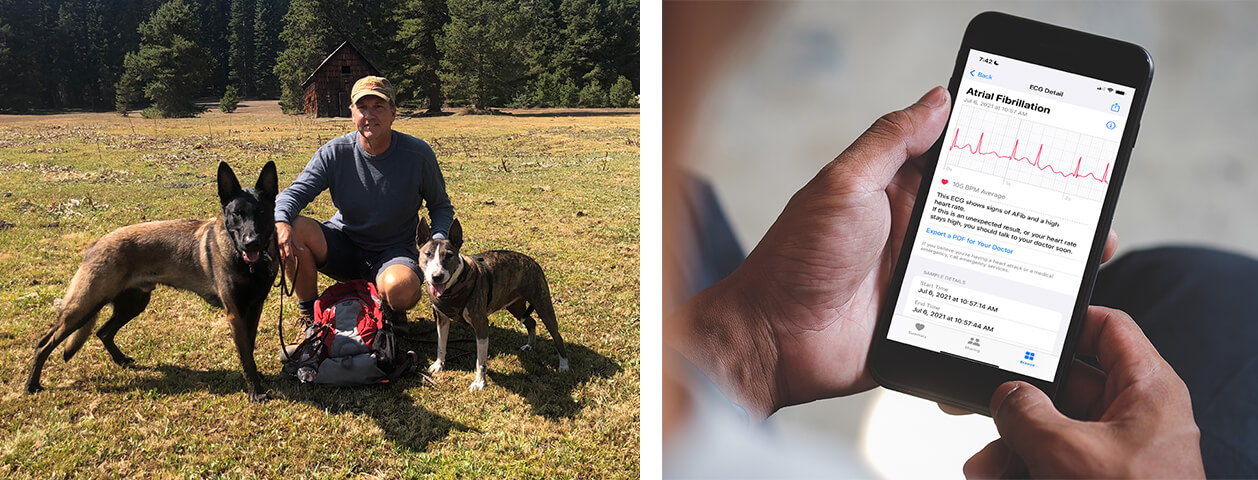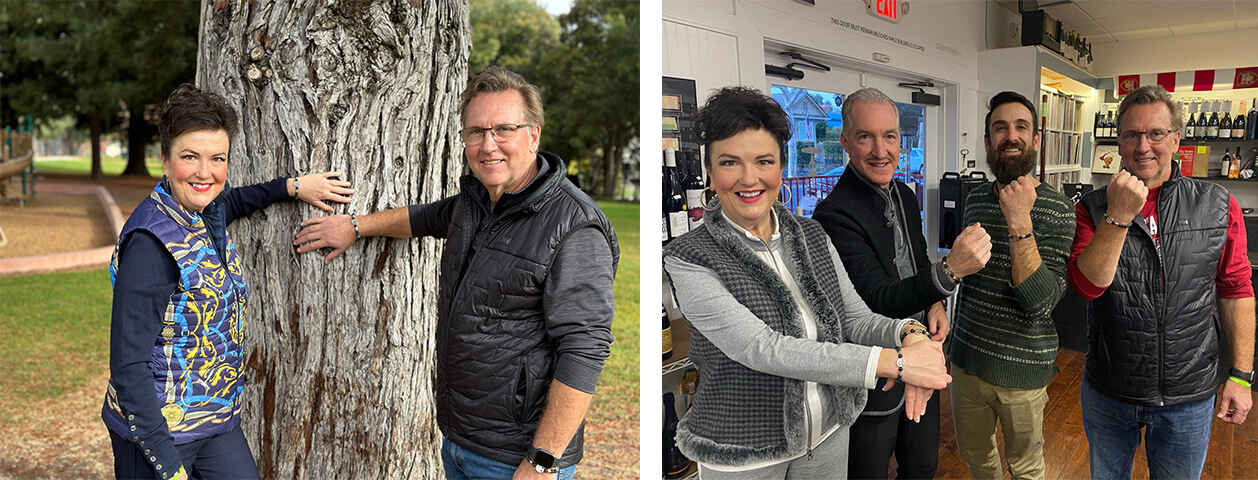
TYPE OF STROKE: ISCHEMIC
The morning of November 9, 2016 started off fine. I was traveling for business, en route from New York to Boston to attend a dinner. But as I was driving a rental car to LaGuardia Airport, my speech stopped and I lost all ability to communicate. I wasn’t sure what had happened, but I felt disoriented and incredibly sleepy. The next 24 hours seemed almost like a dream, marked by foggy memories and confusion. I managed to get to the airport and board my flight, but when I arrived at the hotel in Boston, I realized I had lost my wallet and glasses. Unable to check in and unsure of where I was in the first place, I decided I needed to go home. I set out on foot, luggage in tow, and walked aimlessly around the city. My iPhone was buzzing with calls and texts all night, but in that state, I couldn’t figure out how to operate it and get in touch with someone. I eventually reached a train platform and spent the night sleeping among bushes and trees until it started to rain. Still disoriented, still sleepy, and now soaking wet, I sought refuge in an outdoor mall. After a security guard chased me out rather than offer assistance, I miraculously ended up back at the hotel, where my coworkers called an ambulance.
Unbeknownst to me at the time, I have Atrial Fibrillation (AFib). My heart had formed a blood clot that went to my brain. About 85 percent of all strokes are ischemic, like mine, and one in five people with AFib will experience a stroke at some point in their life. Symptoms for AFib can include fatigue, lightheadedness, shortness of breath, decreased blood pressure, and heart palpitations. Devices like the Apple Watch or Kardia can easily monitor your heart. Catching AFib early can be crucial in preventing a stroke. The typical symptoms of stroke are facial drooping, slurred speech, and numbness arms or legs. But often, there are more subtle signs like the ones I experienced: disorientation, sleepiness, and little to no speech. In these cases, just a couple of simple questions like “what’s your name?” or “what is the date?” could indicate a stroke. Every minute is critical!

The biggest challenge I faced in recovery was aphasia, which affects language including speech, reading, and writing. I also struggle with auditory processing. I was lucky to have a wonderful speech therapist who has spent the last several years helping me and my family overcome these hurdles. The rewiring started immediately, relearning how to form sounds and letters into words and eventually into sentences. Exercises like distinguishing between “before” and “after,” logical questions like “can fish fly,” or simple daily tasks “tell time on an analog clock” were instrumental in rebuilding my speech and auditory processing. I found the key to progress was practice, practice, and more practice.
Four years later, my journey to recovery is ongoing. I no longer have a speech therapist, but I continue my education by reading, writing, and using technology; the variety of smart device apps for aphasia and other cognitive exercises have proved invaluable. I’ve had the opportunity to share my story at speaking events, which was a big but rewarding leap. I continue to receive fantastic medical attention and tremendous support from friends and family. Every day is different; the bad days, when I’m too tired or the words aren’t coming to me, are far outnumbered by days of growth and progress. The road ahead may be a long one, but through humor and perseverance, I know it is a bright one.
Years later, while vacationing in San Sebastián, I encountered a woman selling jewelry at an outdoor cafe. I was instantly intrigued by the Tree of Life symbol in some of her pieces. I have since come to learn that the Tree of Life is present in many cultures around the world and carries many different meanings, including Strength, Growth, Revival, Interconnectivity, and Family. The symmetry of this symbol and a brain’s post-stroke recovery felt so clear. After seven years of rewiring my brain and creating new pathways, I saw my journey reflected in this story of a tree growing new branches. This experience inspired me to handcraft bracelets featuring the Tree of Life symbol as a tribute to the stroke survivors community. Friends, family, and loved ones can wear their bracelets as a tribute to the survivors in their own lives.

Tom was the first Member for the Board of Advisors at Champion the Challenges. He provides ideas and insight that will help us achieve our mission of Inspiring Stroke Survivors. He most recently designed The Stroke Tree of Life Bracelet, which has been an amazing way to celebrate all those stroke survivors and families that have Championed the Challenges of life after a stroke. Visit our store and see the amazing bracelets and make sure you join our community by getting your bracelet today.

